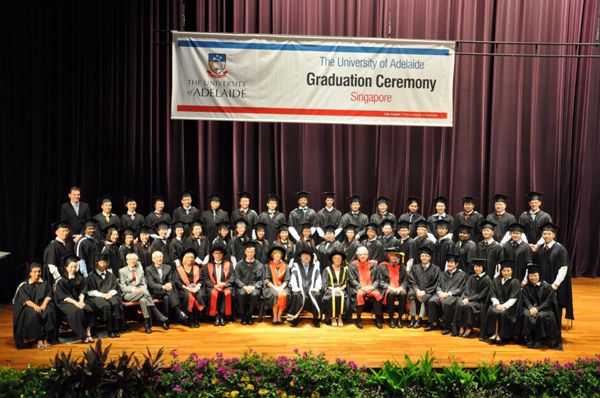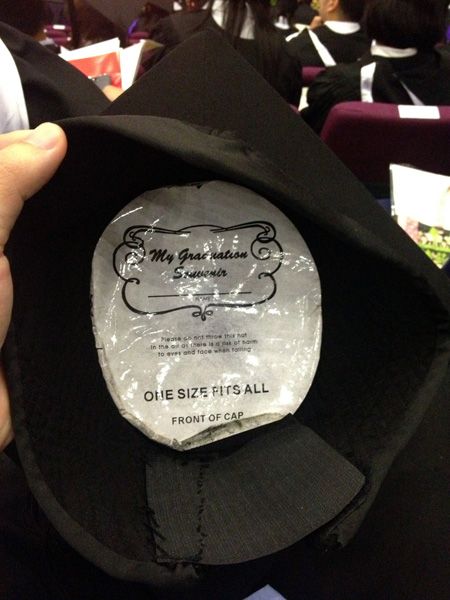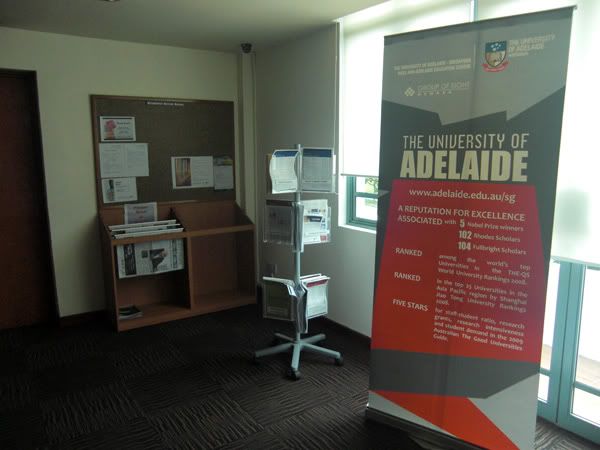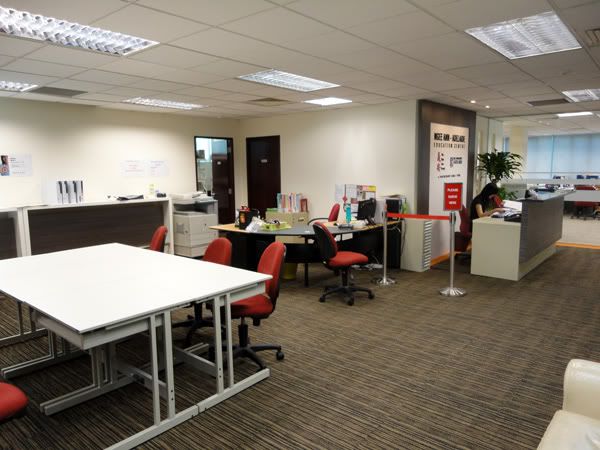Selecting a MBA programme is in itself an adventure. My decision on the most suitable programme is shaped by years spent overseas. I hope to share my experience with anyone who is also considering MBA studies in Singapore.
1. Why I want to study for a MBA
I have always wanted to get a masters degree ever since my final year in NUS. As I was computer engineering trained, I was expecting my next degree to be a non-technical one. The next logical choice back then is a MBA since that is the most popular masters degree going around in the world.
2. When I have decided to get started on the MBA
After starting work with my current company, I have shared with everyone of my intention to take a MBA one day, and my boss advised me in end-2005 to take up Japanese instead. I followed his advice steadfastly and achieved JLPT2 by end-2009. During the period between 2005 to 2009, it was also not suitable for studies as I was stationed overseas most of the time. From 2010, with a job scope change, I am able to be based back in Singapore permanently to finally get started on my MBA studies.
3. How my choice of MBA programme changes with time
Between mid-2005 to mid-2007, I was planning to take a MBA programme full-time overseas. Several universities came to mind, such as Italy's SDA Bocconi, Canada's Queens University, Australia's Melbourne University, Waseda/Keio Business School, several US MBA programmes. I used to conduct extensive research on their course of studies and the fees required. There were reasons why I choose these universities. I know a bit of Italian and love Italian culture, so the top business school in Italy seems like a natural choice. I attended a student exchange programme to the Queens' University of Belfast, with another Queens University in Canada, where it's business school is also quite reputable, that choice is also considered. I was living in Japan back then and would like to learn Japanese and get a masters concurrently, so the Japanese universities came to mind. And of course, the top US universities were also the best since they were world-renowned. By mid-2007, after spending 1.5 years overseas, I started to miss Singapore and my priorities shifted again.
From mid-2007 till mid-2008, I spent another 1 year overseas in Japan. At this time, I started looking at full-time MBA programmes in NUS, NTU and SMU. As I wished to spend more time in Singapore, only local schools were being considered. It is here that the large proportions of foreign students in the NUS MBA course were highlighted through public reports and how the fees start to inflate from $16k in 2005 to $50k in 2010. I also realized NTU MBA has great potential and was seriously considering going for the full-time double degree with Waseda university. At that time, NTU MBA is still unranked. It is when the financial crisis struck in end-2008 that my target-MBA programme shifted again.
With the world going into economic tailspin from early-2009, I was looking forward to less work-days and has started planning for a part-time MBA programme in Singapore instead. Unfortunately, the opportunity for studies never came as I was sent overseas again to handle some tough projects.
4. My requirements for the ideal part-time MBA programme in Singapore
It is here where I find the Opportunity Costs of studying full-time to be too great for me. Imagine the time and cost that will be incurred from not working for 1 year as well as the cost that will be spent. I also started to evaluate the MBA based on the Return-On-Investment. The part-time MBA programmes offered in Singapore are now being considered. I have evaluated and set the following criteria in the selection of a suitable programme:
a) More than 30 hours of contact time per module. This is important in that it provides networking time with fellow students.
b) Lessons held over the weekends and the classes should be more centrally located in Singapore.
c) Flexible schedule to allow me to stop as and when I wanted (in case I need to go overseas again or do something else)
d) A variety of choices which I can make on the modules to study at my own pace
e) Must be taught by their university faculty staff and not just any man off the street.
5. The selection process
NUS, NTU already fail when it comes to option b). Most of their classes are held over the weekdays evenings and in remote parts of Singapore. Since I graduated from NUS, I know how NUS is like and I do not particularly like the NUS education culture. The lecturers do not really speak good English and the tutors/lecturers to students ratio is just horrendous. I wonder how anyone is able to learn in that environment.
SMU is good but it's too intensive. Those who take their 1 year full-time programme already complained that they barely have time for anything else. The part-time programme is only an additional 3 months. When it comes to tuition fees, as of 2010, NUS, SMU, NTU fees are in the $50k plus range. With this amount, I would advise Singaporeans to pursue the MBA overseas instead of locally since it has better recognition and the overseas experience is invaluable. As I have spent so much time overseas, I will skip the overseas full-time MBA and local universities.
Next comes the private universities in Singapore. I will skip the universities whose names are unknown and will mention the more famous ones. We have INSEAD, Manchester, Chicago, Buffalo, Strathclyde, Adelaide, U21 and so on. I will not go through the details of elimination and I guess my criteria is too strict as only Adelaide meets the requirement with the best potential ROI.
Currently Adelaide Business School is getting accreditation with AACSB. They will be implementing GMAT-entry requirements from 2011 and will shift the minimum work experience to 3 years. Their partner, Ngee Ann Kongsi, has a strong reputation for supporting credible education work in Singapore, from Ngee Ann Primary School, Ngee Ann Secondary, Ngee Ann Polytechnic, and there is also Ngee Ann City where they host cultural activities regularly. If I used my investing analysis, I will say the Adelaide MBA in Singapore is currently under-valued. Thus it will offer the greatest ROI after a few years.
Another plus point to it is that they have summer schools every January for students to study 2 weeks in Adelaide. Or they can choose from it's exchange partner universities in Europe if we can stop work for a few months to study there.
I will not mention about Adelaide's many prominent alumni. You can read that on the website.
So it is decided - Adelaide MBA!
 The attached image is obtained from the University of Adelaide 2010 Program Handbook. Image copyright is held by the University of Adelaide business school.
6. First Impressions
The attached image is obtained from the University of Adelaide 2010 Program Handbook. Image copyright is held by the University of Adelaide business school.
6. First Impressions
I signed up for one of Adelaide's information session to find out more about it on the 10th April. The staffs are friendly and very approachable. Thereafter I submitted my application immediately and went for their orientation programme on the 17th April. It is very well-coordinated. There were lecturers from Adelaide (using the Queen's English) who explained to us on both days. My friends collected their study materials on the 17th April.
I heard that there is actually a KPMG career session with the students in the coming week. Normally KPMG will be selective of the universities they approached to give talks. It appears Adelaide University in Singapore is one of those few they have approached. Considering Adelaide University in Singapore offers courses only for a part-time basis, there is really great potential in this university.
Secondly, I met a student there who graduated from NTU Business School in 2007. She will be taking Masters in Finance from University of Adelaide. She has asked a friend who works in MOE, specializing in foreign universities degrees recognition, on which is the best private school to approach in Singapore for the masters programme. He replied 'Adelaide' without much hesitation.
I believe the student welfare and support for alumni will be there by Ngee Ann Kongsi and Adelaide University. It is in sharp contrast to NUS. Actually I am more inclined now to give back (donate) to Adelaide University in the future. The admin staffs and lecturers have won me over.
Based on my analysis, the admissions to Adelaide University in Singapore will become increasing stringent in the future. The fees will definitely increase so it is best to apply fast.
HTML clipbo7. Return on Investment Updates (18th April 2011)
One year into the MBA course, I find studying an MBA is essentially an investment decision. I mentioned to friends about the Return on Investment (ROI) on MBA education and they asked me to explain more about it.
Previously I have read on the newspapers that someone spent S$120k on an executive MBA program with a good US business school in Singapore. After graduation, he found that his starting salary is about the same. Considering the opportunity cost of spending time on part-time studies and the $120k on tuition fees (reference to Economics for Manager), and minimal increase after his graduation, we will start to question whether is a MBA worth it?
Like all investments, do you buy the shares of a Company A that has great growth potential or do you invest in the shares of a Company B that has already established itself and is giving regular dividends? You will realize it is better to invest in company that has growth potential as it will give you the price gain plus dividends in the future (reference to Accounting for Manager). The Adelaide MBA is such that of Company A.
The lecturers are dedicated and the students come from diverse background. University of Adelaide is a very well-established university and the business school is focused on achieving the multi-accreditation which have been obtained by the other business schools. There is stable growth potential for the Adelaide MBA programme.
Choose the MBA programme wisely as we normally study MBA once in our lifetime.
8. Adelaide Business School is now AACSB certified (18th August 2011)
Today, we have received the good news from Head of School. Adelaide Business School is now AACSB certified. As what Professor Burgan has said "We have used the accreditation process to ensure that our MBA is one of the best in Australia. It is a high-quality, high-impact MBA, one that is internationally recognised, relevant to industry and has a global focus. Our entry standards to the MBA program also ensure that our students are of the highest quality."
 9. Opportunities for overseas exchange programme (26th August 2011)
9. Opportunities for overseas exchange programme (26th August 2011)
There are plenty of opportunities for the Adelaide-Singapore MBA students to take part in overseas exchanges, not only in University of Adelaide campus, but also with the European universities. A few photos can be seen below.

 10. Adelaide Alumni Breakfast (26th April 2012)
10. Adelaide Alumni Breakfast (26th April 2012)
The University of Adelaide is renown for its strong alumni association in Singapore. There is actually at least 1 alumni activity per quarter. I have not joined any of the alumni activities before as I am still a student. But an invitation by a friend to sign up for the breakfast session encouraged me to participate in my first ever alumni gathering. The people in the alumni are nice and welcoming. As with any MBA programmes, the alumni is actually an important perpetual part of the education. Once you are in the alumni, you are always in it and they provide good networks and support from the community around the world. I will be looking forward to joining in more of the alumni activities.
On this day while we are having our class, the school is having a photoshoot for a corporate video. And here are several classes from different programmes gathering together for a photo pose.


























































